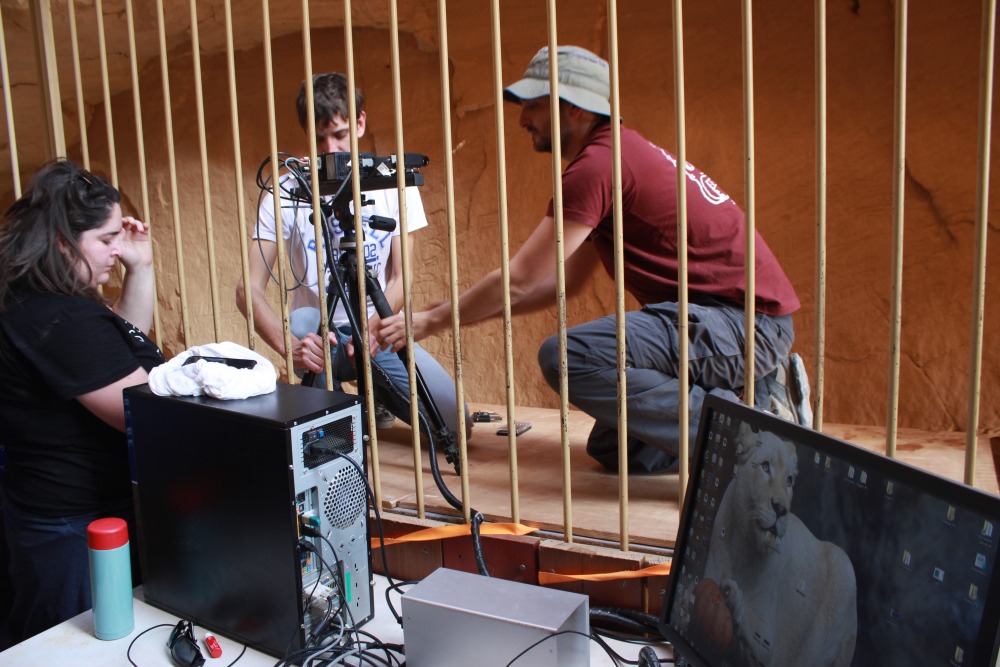The purpose of the Computational Archeology Laboratory is to apply mathematical and computational methods to archaeological research, documentation, and visualization. The laboratory is equipped with modern, detailed scanners which provide three-dimensional models of archaeological finds. These scanners allow for high-precision and high-volume scanning, which processes the artifacts more efficiently than traditional methods. In addition to analysis, the scanners generate precise three-dimensional representations of artifacts. These models allow for fast and accurate replication of artifacts for museums and other organizations, as well as the digital preservation of the artifacts. This enables educational outreach by virtually providing access to archeological artifacts from anywhere.
The laboratory has developed several research-oriented computer programs in addition to using other free-to-download ones. The software used by the laboratory includes Pottery 3-D, a program that analyzes items with axis of symmetry, such as ceramic and other vessels. The application allows the positioning and drawing of pottery fragments. Artifact 3-D analyses lithic artifacts, figurines, stamps, lamps, and other non-symmetrical objects. ArchCut 3-D aims at documenting and examining engravings and cut marks. AGMT3-D provides a set of tools that helps in collecting, studying, and understanding the results of similar 3D points used for shape analysis.
These applications are made free to use and download, and can be found at the following links:
Artifact 3-D: Artifact3-D download | SourceForge.net
ArchCut 3-D: ArchCUT3-D download | SourceForge.net
AGMT3-D: Artifact GeoMorph Toolbox 3D 3.1 download | SourceForge.net
Pottery 3-D is designed for documentation and analysis of pottery sherds and complete vessels. It can also be applied to manipulate other artifacts with  axial symmetry such as some glass or stone artifacts. This program is an efficient, fast, and accurate procedure to position and draw pottery fragments at a rate which exceeds traditional manual methods. The program has successfully analyzed thousands of sherds. A computer-based classification into typological ‘families’ is constructed based on these shape features. Finally, the models allow one to extract a series of quantitative measurement describing the object such as the volume capacity of complete vessels or the degree of deformation from a perfect cylindrical symmetry.
axial symmetry such as some glass or stone artifacts. This program is an efficient, fast, and accurate procedure to position and draw pottery fragments at a rate which exceeds traditional manual methods. The program has successfully analyzed thousands of sherds. A computer-based classification into typological ‘families’ is constructed based on these shape features. Finally, the models allow one to extract a series of quantitative measurement describing the object such as the volume capacity of complete vessels or the degree of deformation from a perfect cylindrical symmetry.
Artifact 3-D is designed to document and analyze archaeological finds such as lithic tools, ground-stone tools, art objects, and bones. The program positions the artifact based on its geometric properties and generates a conventional representation with views, transversal sections, and other visual aids in plates suitable for publication. The program also performs linear measurements, angle calculations, and geometric morphometric analysis. Furthermore, the software can extract quantitative parameters that can only be obtained based on 3-D information.
ArchCut 3-D is designed for the documentation and analysis of incised and engraved surfaces such as art engravings and cut marks. The program follows a selected surface and  produces a series of three-dimensional cross-sections at intervals of a millimetre. These successive sections allow one to examine the properties of the engraved line at a single point, and changes in the line over the length of the engraving. A morphological analysis of each line and characterizing relations between lines allow for an understanding of the series of actions and motions in the process of engraving.
produces a series of three-dimensional cross-sections at intervals of a millimetre. These successive sections allow one to examine the properties of the engraved line at a single point, and changes in the line over the length of the engraving. A morphological analysis of each line and characterizing relations between lines allow for an understanding of the series of actions and motions in the process of engraving.
AGMT3-D (Artifact GeoMorph Toolbox 3-D) is designed to provide the archaeologist interested in artifact shape variability with a toolbox to allow analysis and results exploration of homologous 3D landmark-based geometric morphometric data. The toolbox contains an automated item and semi-landmarks positioning procedure and the fundamental statistical analyses and procedures to allow the processing and analysis of the data. It is designed to be simple and straightforward with a simple user interface. Furthermore, it provides direct, quantitative, and objective results to answer common archaeological research questions with regards to artifact shape variability.


 Scanning wall engravings at Timna Valley Park. Photo by Liron Narunsky
Scanning wall engravings at Timna Valley Park. Photo by Liron Narunsky